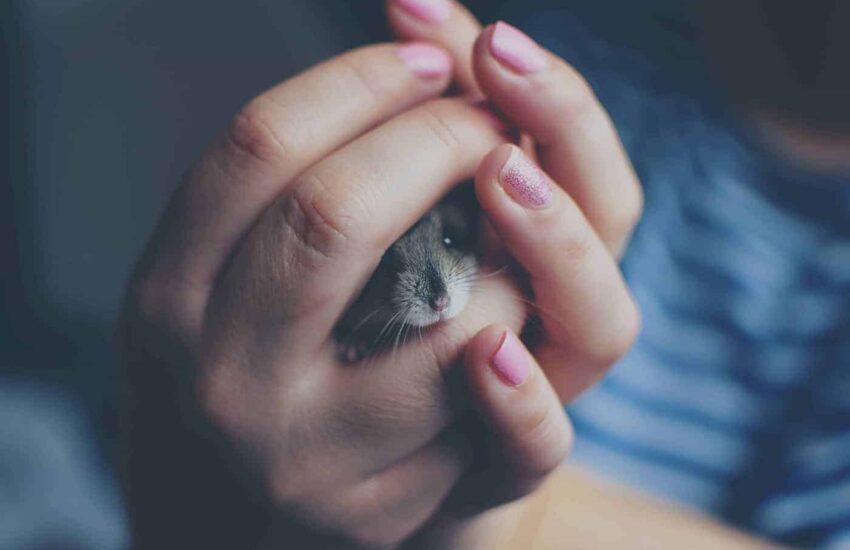Understanding the Characteristics of Various Hamster Breeds
Types of Hamster Breeds
Hamsters are popular pets known for their adorable appearance and playful demeanor. There are several distinct breeds of hamsters, each showcasing unique characteristics that can appeal to different types of pet owners. The primary hamster breeds include the Syrian, Dwarf Campbell’s, Roborovski, and Chinese hamsters. Understanding what each breed brings to the table is essential for selecting the right companion that fits your lifestyle.
Syrian Hamster
The Syrian hamsters, also known as golden hamsters, are the most commonly kept pet hamsters. They are known for their robust size, reaching about 5-7 inches in length. One of the standout characteristics is their friendly personality, making them ideal for families. Syrian hamsters are solitary creatures by nature, thus it’s vital to house them alone to prevent territorial disputes. They come in various colors and coats, including long-haired varieties which require regular grooming for upkeep. A healthy diet filled with fresh fruits, vegetables, and quality hamster pellets will keep them vibrant and active.

Dwarf Campbell’s Hamster
Dwarf Campbell’s hamsters are much smaller than their Syrian counterparts, typically measuring 4-5 inches long. They are known for being social creatures, often thriving when housed with compatible companions. These hamsters display a wide range of fur colors and patterns, making them visually appealing pets. Their playful and curious nature can make them a bit nibbly, so they require gentle handling to establish trust. Like all hamsters, they demand a healthy diet and sufficient space to explore and play to live a satisfying life.
Roborovski Hamster
Roborovski hamsters may be the smallest breed, usually only 2-4 inches long, but they come with a big personality. These energetic little creatures are remarkably playful and quick, making them a delightful addition to any home. They are generally social and can be kept in small groups; however, it’s important to monitor their interactions to avoid aggression. An interesting aspect of Roborovski hamsters is their ability to adapt to larger cages with ample space for exercise. This contributes to their overall well-being as well as keeping their curious little minds entertained.
Care Needs for Roborovski Hamsters
Caring for Roborovski hamsters is similar to other breeds, but there are particular considerations. Because of their small size, they can easily escape through narrow openings in cages. Therefore, ensuring their habitat is secure is crucial. Additionally, these hamsters enjoy burrowing, so providing them with bedding suitable for digging is essential. Their diet, predominantly made up of hamster pellets, can be supplemented with seeds, fruits, and vegetables, ensuring that they receive the nutrients required for a healthy lifestyle. Regular social interaction will keep them friendly and accustomed to human companionship, essential for a happy pet.
Chinese Hamster
Chinese hamsters are slightly larger than the Roborovski but smaller than the Syrian, measuring around 4-5 inches. Recognizable by their unique tail, which is longer than other breeds’, they possess a gentle temperament and can be quite friendly when socialized from a young age. Chinese hamsters are typically solitary but can sometimes cohabitate if introduced properly. Their diet is similar to other species, with a balance of commercial hamster food and fresh foods to ensure good health.
Understanding the Habitat Requirements
Creating a comfortable habitat for a Chinese hamster involves providing ample space, hiding spots, and exercise wheels for physical activity. It’s essential to ensure proper ventilation and choose a safe bedding option, avoiding cedar or pine shavings, which can harm them. Regular cleaning of the cage and fresh water availability is crucial to maintain health. Recognizing their unique behaviors and respecting their solitary nature can lead to a rewarding relationship between owner and pet.
Key Takeaways Before Choosing Your Hamster Breed
Each hamster breed comes with its own set of characteristics and needs, making it essential to understand and consider these before selecting your next pet. The Syrian hamster is perfect for beginners looking for a docile friend. In contrast, Dwarf Campbell’s are ideal for those that wish to enjoy a more social experience. Roborovski hamsters offer excitement with their playful nature, while the gentle Chinese hamster provides a more laid-back pet experience. Ultimately, the key is selecting a breed that aligns with both your lifestyle and what you desire in companionship.
FAQ
1. What is the lifespan of a hamster?
The average lifespan of a hamster varies across breeds, but generally, they live between 2 to 4 years. Syrian hamsters may live up to 3 years, while Dwarf Campbell’s often live around 2-3 years.
2. How often should I clean my hamster’s cage?
To maintain a healthy environment, it is advisable to clean the hamster’s cage once a week, removing soiled bedding and replacing it with fresh bedding. This helps prevent odors and keeps your hamster healthy.
3. Can hamsters be kept together?
Most hamsters are solitary animals, especially species like the Syrian hamster, which should not be housed with others. However, breeds like Dwarf Campbell’s and Roborovski can be kept in groups if compatible, but introductions should be managed carefully.
4. What type of diet do hamsters require?
Hamsters thrive on a diet encouraged by commercial pellets supplemented with small amounts of fresh vegetables and fruits. Provides variety while ensuring their diet includes essential nutrients.
5. Do hamsters require special bedding?
Yes, hamsters need specific bedding materials that provide adequate absorbency and comfort. Avoid cedar or pine shavings; instead, opt for paper-based or aspen bedding, which is safer for their health.
6. How should I handle my hamster?
Handling your hamster gently and early makes it comfortable with you. Scoop them up slowly and avoid sudden movements to prevent stress. Gradually increase the time spent holding them as they grow more accustomed to your presence.
7. Do hamsters need a companion?
Most hamsters are solitary and do not need companions, especially Syrian hamsters. If you opt for social breeds like the Dwarf Campbell’s or Roborovski, ensure they are introduced properly to minimize territorial behavior.
